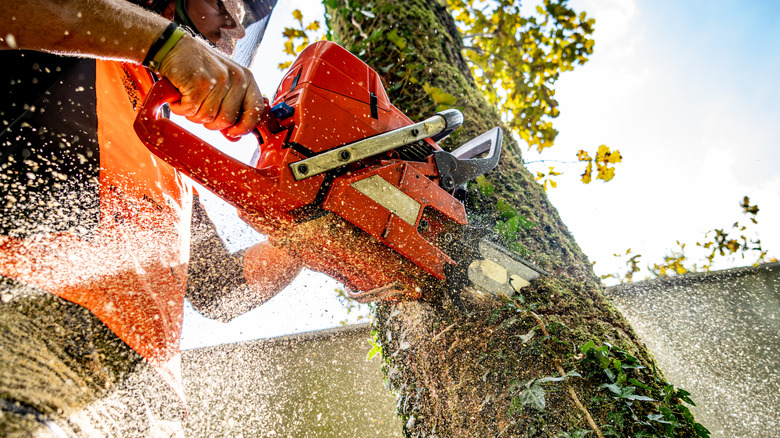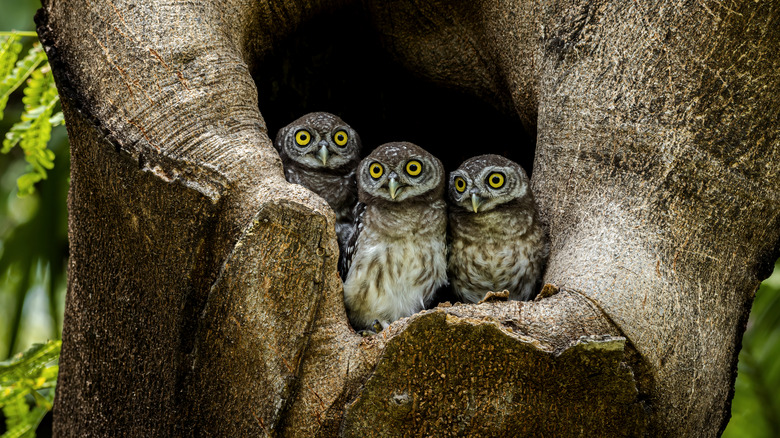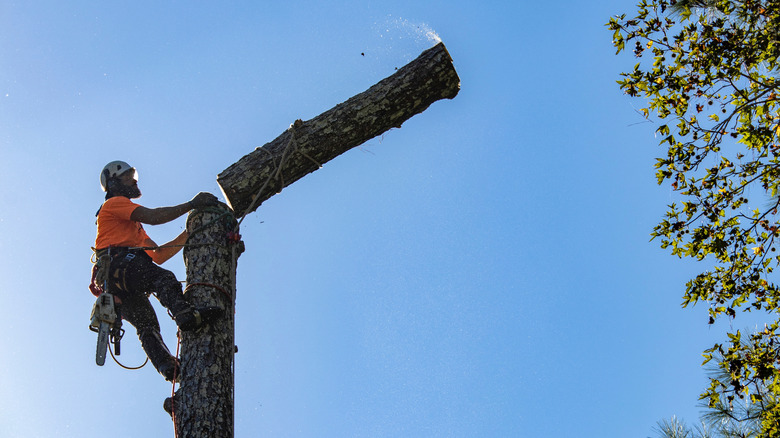The Best Time To Cut Down A Tree Without Harming Wildlife
A tree doesn't have to be alive to be a vital part of an ecosystem — dead trees make ideal nesting spots for lots of animals. However, they are also risky to have on your property, and the danger of falling on structures, people, or pets is certainly something to worry about. But if you're thinking of cutting down those trees hanging over your house, it can be cruel and even illegal to remove some of the animals' nesting spots.
House Digest was lucky to get an exclusive interview with John Snow, a Florida-based Senior Urban and Community Forester with Tree Check Up, LLC. Snow is a Board-Certified Master Arborist and is also ISA Tree Risk Assessment Qualified. He shared with us that "the best time to cut down a tree is when wildlife, especially birds and squirrels, are not actively nesting, breeding, or raising their young. This period often aligns with late fall and winter, as many species have completed their breeding cycles by then. However, the timing can vary based on geographic location and local wildlife patterns."
Observe the tree for signs of wildlife
November might be the best time to trim your trees and shrubs, but there isn't a surefire timeline for when to tackle full-scale tree cutting. To assure that a tree is nest-free, Snow advises property owners to observe animal activity around the tree carefully before removing it. If a protected migrating bird has chosen your property to build a nest, the Migratory Bird Treaty Act makes removing nest-bearing trees illegal.
During his exclusive interview with House Digest, Snow reassured us that "most reputable [tree care] companies respect, value and understand that trees are often homes and provide food for wildlife, so they take care to ensure little critters are protected as much as possible." If you're not sure about how to proceed, he recommends talking to an arborist in your area.
Now, hiring an arborist might not always be economically feasible. In case you need to make the call on your own, Snow listed a few criteria that can tell you whether animals have taken up residence in the targeted tree. Start by inspecting branches and holes in the tree that you can access safely to check for active nests. Keep an eye out for obvious signs, like eggs, and more subtle indicators, like areas with lots of animal activity. If your tree appears to be nest-free, you may still want to think twice before cutting down the tree yourself, since it's a potentially dangerous job. However, if you do see evidence of nests, the most ethical and law-abiding thing to do is wait.
Tips for wildlife-friendly tree removal
Even if a tree isn't holding active nests, cutting it down still has the potential to disrupt your backyard habitat in other ways. Once you've seen enough signs that tree removal is the right decision for your yard, take a few more steps to make sure you don't harm animals or their nests in the tree's vicinity. Snow passed on several invaluable tips for taking trees down when he spoke exclusively with House Digest. First, he advised to "use proper rigging techniques to control the fall of branches and wood, minimizing disruption to nearby habitats." He also suggested finding ways to minimize noise and other disturbances to the area.
Sometimes, cutting down only part of the tree is the right choice. Snow advised us that "leaving a portion of the tree standing in a safe area (away from homes, playgrounds, or high-traffic zones) can create habitat for wildlife. This technique is often used to provide nesting opportunities for birds or den sites for small mammals." Snow concluded that a tree might not always need to come down completely. He stated, "assess whether the tree needs to be removed entirely or if trimming or selective pruning is a better option."


